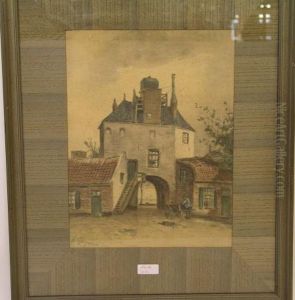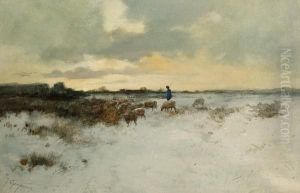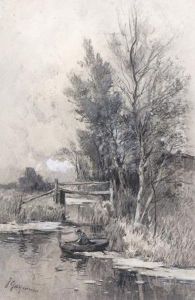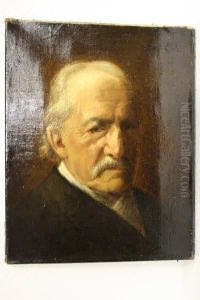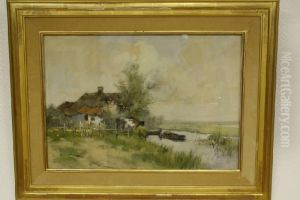Johannes Josephus Garjeanne Paintings
Johannes Josephus Garjeanne, born in 1860 in the Netherlands, was a Dutch artist known for his watercolor paintings and drawings. His work, primarily focusing on landscapes and scenes of rural life, captures the tranquil beauty of the Dutch countryside and the everyday lives of its inhabitants. Garjeanne's artistic journey was deeply influenced by the natural environment and the pastoral settings of his homeland, which is vividly reflected in his art.
Garjeanne's career spanned a period in Dutch art history where there was a strong emphasis on realism and capturing the essence of Dutch identity through landscape and genre painting. Unlike the grand, historical, or religious themes that dominated much of European art history, Garjeanne, similar to many of his Dutch contemporaries, found beauty and significance in the simplicity of daily life and nature. His works are characterized by a meticulous attention to detail, a soft yet rich color palette, and an ability to evoke emotion and atmosphere.
Despite not being as widely recognized as some of his contemporaries, Johannes Josephus Garjeanne contributed significantly to the Dutch art scene of his time. He participated in various exhibitions and was a member of art societies, which helped in fostering his reputation as a skilled landscape painter. His dedication to capturing the essence of rural Netherlands has left a lasting impression on Dutch art, making his work a valuable part of the country's artistic heritage.
Garjeanne's death in 1930 marked the end of an era that cherished the serene and bucolic aspects of Dutch life through art. His legacy, however, continues through his paintings, which remain in collections and museums, serving as a testament to his artistic vision and the beauty of the Netherlands. Johannes Josephus Garjeanne's work, while perhaps not as celebrated globally as some of his peers, retains a cherished place within the annals of Dutch art history for its heartfelt portrayal of the landscape and spirit of his time.
